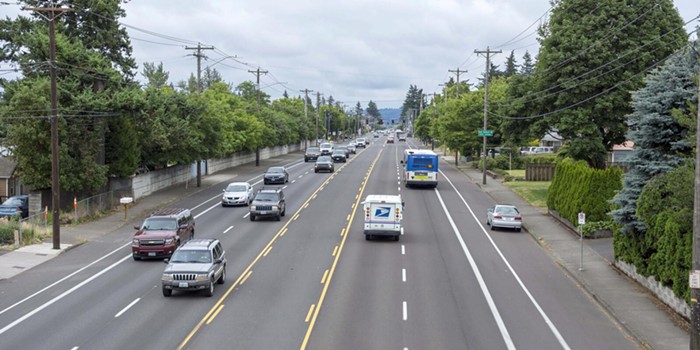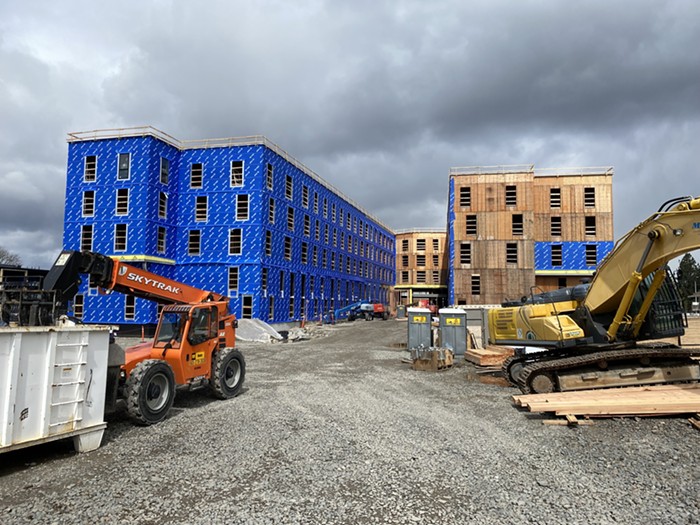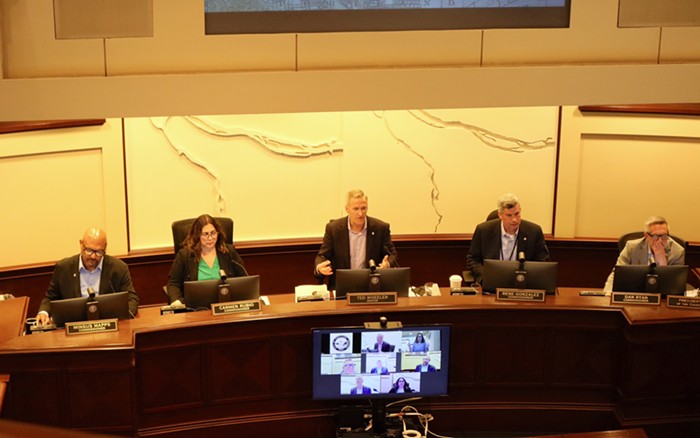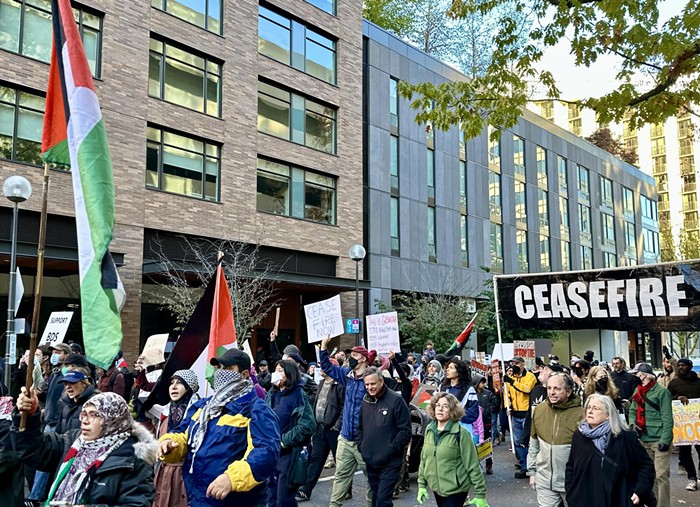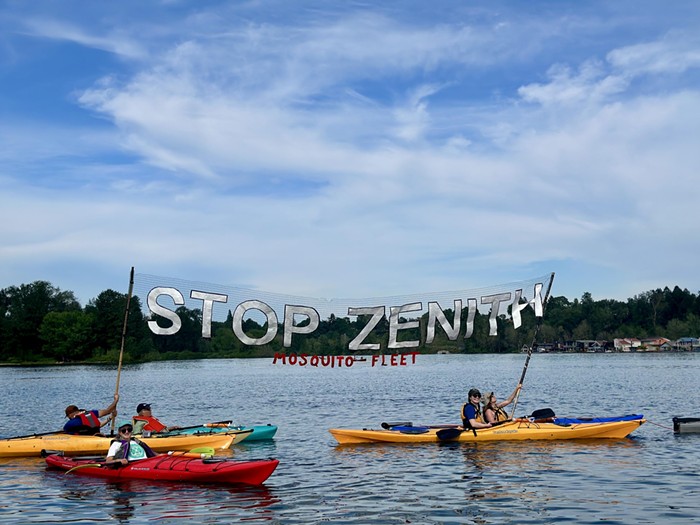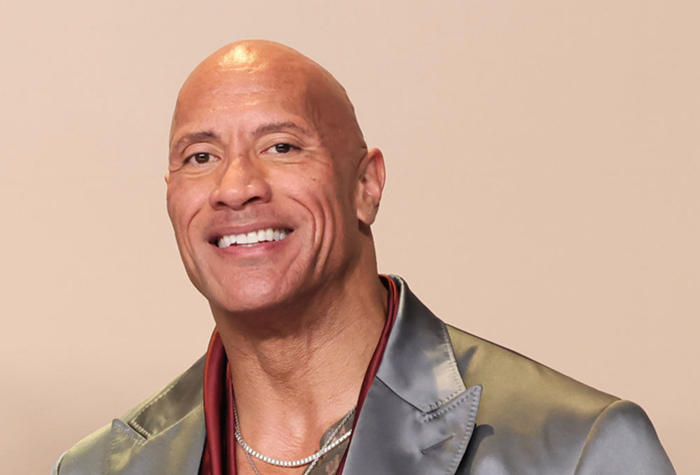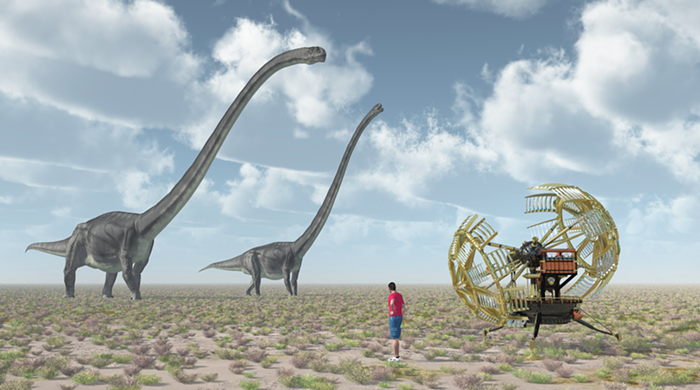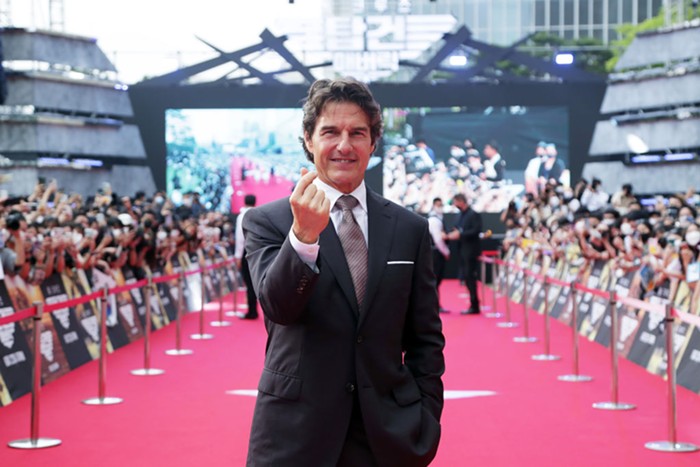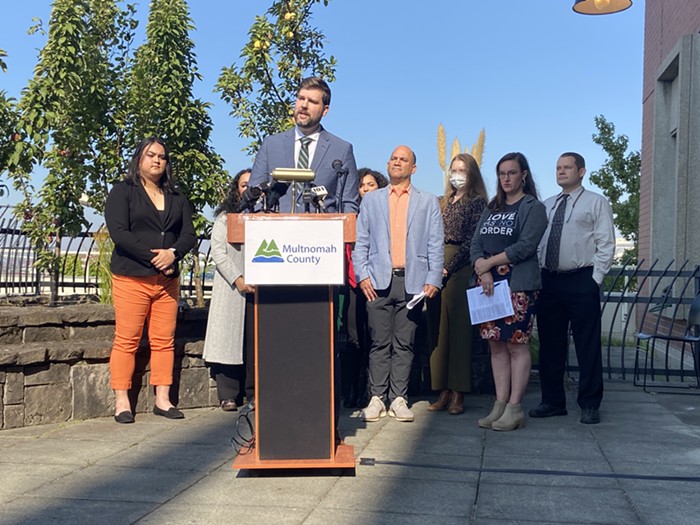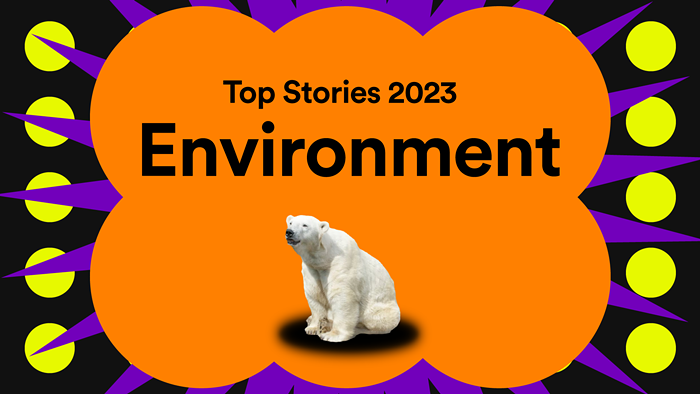YOU DON’T GET any closer to understanding the appeal of Donald Trump by looking at his policies or listening to his speeches. Smarter people than I have been driven to depression by trying to sort out the reasoning behind his popularity. I went to Cleveland last week for the Republican National Convention just to be near such an odd and crucial moment in history, to sail into the heart of the lonely storm and all that.
I arrived in Cleveland at five in the morning on Monday to a thunderstorm that looked like the weather that circles a supervillain’s lair. Rain streaked the windows of the airport shuttle as I mumbled to myself, “Ominous.” Midwest lightning sparked every few seconds and illuminated the faces around me. With each flash I expected a dramatic orchestral sting to resound with a “Dun-dun-DUNNNNNN.” But the weather cleared by daybreak and the entire week was beautiful, as far as nature could accomplish.
Across the street from where I was staying was the Cudell Recreation Center, where 12-year-old Tamir Rice was killed by two police officers in November 2014. Rice was standing on the playground with a toy gun when a cop car pulled up and one of the officers shot him. On the video it looks like the car hadn’t even come to a complete stop by the time two shots were fired.
The playground is miles away from downtown and the convention, and I didn’t expect anyone from the Republican Party to ask their driver to take them so far to bow their head in reverence. A death like Rice’s feels like a bird getting sucked up into the jets of a big airplane, like it is something we have all accepted as a cost of our modern world. That’s the only way I can imagine why a tragedy that was such an important flashpoint for anger and grief in the community of Cleveland would never be mentioned on the stage during the convention in that city.
After all, every death is personal to someone. But the subtext here is: This is the price of civilization. Get over it.
On wooden posts surrounding the playground were painted messages of love and respect from friends and family. One was a picture of a crown with the words, “Young black king Tamir.”
I rode my bike down Detroit Avenue and saw that same crown on the sign of a record store. I asked a man in suspenders sitting outside about the symbolism of the name and logo.
“It comes from Basquiat,” he said. On the back of his right hand was a tattoo of that crown and a quote from Jay Z: “Most kings get their heads cut off.”
He and his friend were talking about all the shootings in Cleveland’s black neighborhoods that past weekend—20 victims in all, including a two-year-old girl shot in the head during a drive-by.
“Then one just this morning that was apparently revenge for something stupid. The kid just waked up and said, ‘This is what snitches get.’ And ‘BAM!’”
“What is going on with all these shootings?” I asked.
“People don’t have jobs,” the man said. “And they see this life of violence glorified everywhere they look.”
AS I RODE AWAY, I thought about dignity. The more I look for common ground among all the divisions in this country, I keep thinking about the desire in everyone to protect their own dignity, however rich or poor, however low their status. And when a person thinks his dignity is threatened, he will do drastic things to save it. All week in Cleveland I listened to local community members talk on panels about immigration, about gun violence, about building better schools. It was so inspiring to see the work being done.
I tried to conceive what we could realistically expect a president to do to solve these problems. I resolved to ask the next person I saw that exact question.
That person turned out to be John Sellers, the man responsible for running the Ruckus Society, which has staged direct action all over the country for the last two decades. Sellers told me that he is wealthy and lives on Vashon Island, Washington, so his life probably won’t be that affected by who becomes the next president. But he came to Cleveland because he felt that the current political situation required an “all hands on deck” response from the opposition. He told me his action the next morning was to organize a wall to prevent Trump from getting to the arena, basically a bunch of long banners painted to look like a wall and held up by immigrants who feel threatened by what is now an official Republican party platform position to build an actual concrete wall between the US and Mexico.
As I rode across the Detroit-Superior Bridge into downtown and the heart of the convention activities, I imagined I was going to encounter something like the crowded masses at Mardi Gras or South by Southwest, but what I found was much smaller and very peaceful. It still featured some participants familiar to those other events: Christians shouting into megaphones holding signs reading, “Stop being a sinner and obey Jesus”; street performers like Sax Man, playing alto sax in a bright red suit along with a pre-recorded backing band.

Aside from the broadcast booths set up by the news networks, there was a surprising lack of corporate presence. SXSW, in contrast, is filled with so many Red Bull tents and Coors Light stages that you almost forget rock ’n’ roll ever did anything other than sell flavored drinks. I wasn’t sure if the lack of brand-sponsored setups was legally mandated, or if corporations really weren’t pressing to associate themselves with burgeoning authoritarianism.
I walked around downtown a while with my friend Tatiana. She said, “I feel like the police are here to actually protect me, not to provoke or escalate a situation.”
She was right. The Cleveland Police Department, under federal oversight for a pattern of police violence, was behaving very well. I looked around at the cops in shorts sitting on bikes and thought of how every little bit of tenderness helped to ease the situation, that even shorts could be de-escalating. “But,” she continued, “I also feel like that could change at any moment.”
The whole Public Square was like the Olympics of law enforcement. We walked past the Indiana State Troopers in their tight blue pants and caved-in hats. The Florida Troopers looked like they were wearing Ghostbusters Halloween costumes. All of the cadres of law enforcement moved around in little teams. I got excited when I spotted South Carolina’s group with their soft blue uniforms, as though I had discovered a rare warbler.
A group of cowboy-hatted Texas State Troopers on horses were posed so regally at the edge of the Public Square that people kept wanting to have their photo taken with them. At one point, the photo-taking was interrupted by a gaggle of Cleveland bike cops in body armor mobilizing for some call. A Texas trooper with a camera in his hands waited patiently for the last of the bike cops to pedal out of the frame.

The “Wall Off Trump” protest assembled in the square and started heading toward the arena. I jumped ahead of the throng to get to where I thought they would end up. I reached a cul-de-sac of bike cops, all positioned so that their heavy-duty mounted bikes created a barrier. There was no way out, and the crowd was coming toward me. I ducked into the patio of a restaurant to protect myself behind a bed of flowers. The crush of humanity never came. There just weren’t enough people to fill up the street.
If you saw a picture of this protest on the news, you would assume it was done for a large audience. But there were really only three groups of people in downtown Cleveland for the convention: protesters, cops, and reporters. There were no locals hanging out. There were hardly any loose delegates running around. There were certainly not any citizens hoping to learn about the democratic process. Everything was happening for some outside, unseen audience.
I turned to one of the local bike cops and asked him how the different factions of police units from all over the country were deployed.
“I have no idea,” he said. “We just do our own thing.”
I was standing next to this officer, who was part of a new wall of police joined together to prevent the people dressed as a wall from going any farther. Looming over these walls were the concrete walls that prevented everyone from going into the arena, where, if you could get in, you’d hear talk of the Wall—not the Pink Floyd album, but the big concrete structure meant to protect us from the supposed threat from the south. None of these walls seemed to have any conviction. You could pass through the police wall if you asked nicely. You could join the protesters’ wall if you were interviewing one of them. And as for the other one, well, what it does in your mind to stoke fear is more than it would ever do if it got built, which it never will.
“Has this week been calmer than you imagined?” I asked the cop.
“People are passionate, but peaceful,” he said. “It’s growing every day, but it’s been peaceful.”
“Is it mostly just a lot of standing around for you?”
“Yeah, but I’m okay with that.”
I wished him a good day, and he did the same, calling me sir.
Friends back home kept texting me, “Be careful” and “I hope you’re all right,” but I wanted to tell them that it was really a wonderful week in the city and that everyone was being very civil. I hesitated to make a sweeping statement of How Great Things Are, for fear that it could all change with one angry person.

BACK IN Public Square, there was a commotion of high-pitched shouting. It turned out to be a performance put on in a little amphitheater by a troupe of clowns— actual clowns, with big pants and red noses. They called themselves #NotFunnyCleveland. Their premise was that they were upset about the visiting politicians being referred to as “clowns,” as it demeaned the status of real clowns.
One clown wore a big suit and had a tangle of golden rope on his head, held on by a big red “Make America Great Again” cap. The audience knew who this was even before he started throwing fake money around. It was fun to have the villainy taken to the extreme, where you could cheer and boo in stark terms. The problem with the comedic potential of this performance, as many have found in this political season, is that it’s hard to parody someone who stacks the Jenga tower of absurdity higher every day.
The clowns’ performance became more effective when they got serious. A black woman with suspenders and a big pink bow in her hair stood in front reading off all the ways that black people have been killed by cops in recent years in America. Behind her, other clowns held up signs saying, “Reaching for your wallet” or “Selling cigarettes,” while two other clowns read out names such as “Philando Castile” and “Eric Garner.” When she got to “Holding a toy gun,” her voice trembled as she said that Tamir Rice was shot “just down the street from here in my own town.” The other clowns let their signs droop down and got silent. “I’m scared,” she said. These were the most honest words I heard the whole week in downtown Cleveland, and they were said by a clown.
But the clowns helped me remember that it’s all a performance. The speeches, obviously, but the protests, too. And a certain kind of performance is what Trump is actually good at. Not reading a speech, but riffing in a moment. Tatiana and I searched for a word for what people like about him. “People keep saying it’s honesty,” Tatiana said, “But it’s not the truthful kind of honesty. It’s more of a brain-to-mouth honesty. He says what comes into his mind and doesn’t filter it. People love that.”
I thought for a second. “He’s present,” I said. “That’s the nicest way I can put it.”
ON WEDNESDAY NIGHT, Ted Cruz gave a speech that was supposed to culminate in an endorsement of Trump, but didn’t. I watched it on a TV with the sound off in a bar called Happy Dog while a punk band from England played. The crowd in the arena, just a couple of miles away, stood up and booed while Cruz charged through the text of his speech, unperturbed.
As a performer, I’ve learned that even if it feels like everything is going wrong, you have to stay positive and believe that it’s working for someone. Even if your guitar won’t stay in tune and the monitor sounds like crap, you have to believe that it sounds good out there. After all, Cruz wasn’t giving the speech to the people in the arena. He was giving it to the people of 2020.
The camera cut to a shot of Donald Trump cast in a deep blue light, standing up looking like a dad upset that you drank his most expensive bottle of wine with your stupid teenage friends.

I thought this expression looked familiar, Trump’s comically frowny face. I looked up a video on my phone of his participation in WrestleMania 23 in 2007. There it was, the rich guy in the suit giving a disapproving look, literally bodyslamming WWE Chairman Vince McMahon and then shaving McMahon’s head in the middle of the ring, the consequence of some previous wager. It was further confirmed the last night of the convention when Trump gave his angry, shouty speech. Here was our One Angry Guy. He wasn’t the weirdo in the streets with a gun as we had feared. It was the nominee himself, a performer of a very specific kind, in the milieu of pro wrestling. All the gestures were big, overwrought, and defied the laws of physics.
The tenets of wrestling performance are the same as clowning or Trump-style politicking: Take a small detail and expand it so it fills a large container and becomes your identity, an identity that can be seen from the back of an arena. We are meant to cheer and boo and get caught up in it, but I keep thinking about all the wonderful people I met in Cleveland who were unconcerned with the current power grab at the top and were just getting to work on making their communities better. That was the inspiration I found in Cleveland, and I won’t let anyone scare that out of me.
Nick Jaina is a musician and writer from Portland, Oregon. His first book, Get It While You Can, is available from Perfect Day Publishing and was a finalist for the 2016 Oregon Book Awards.

